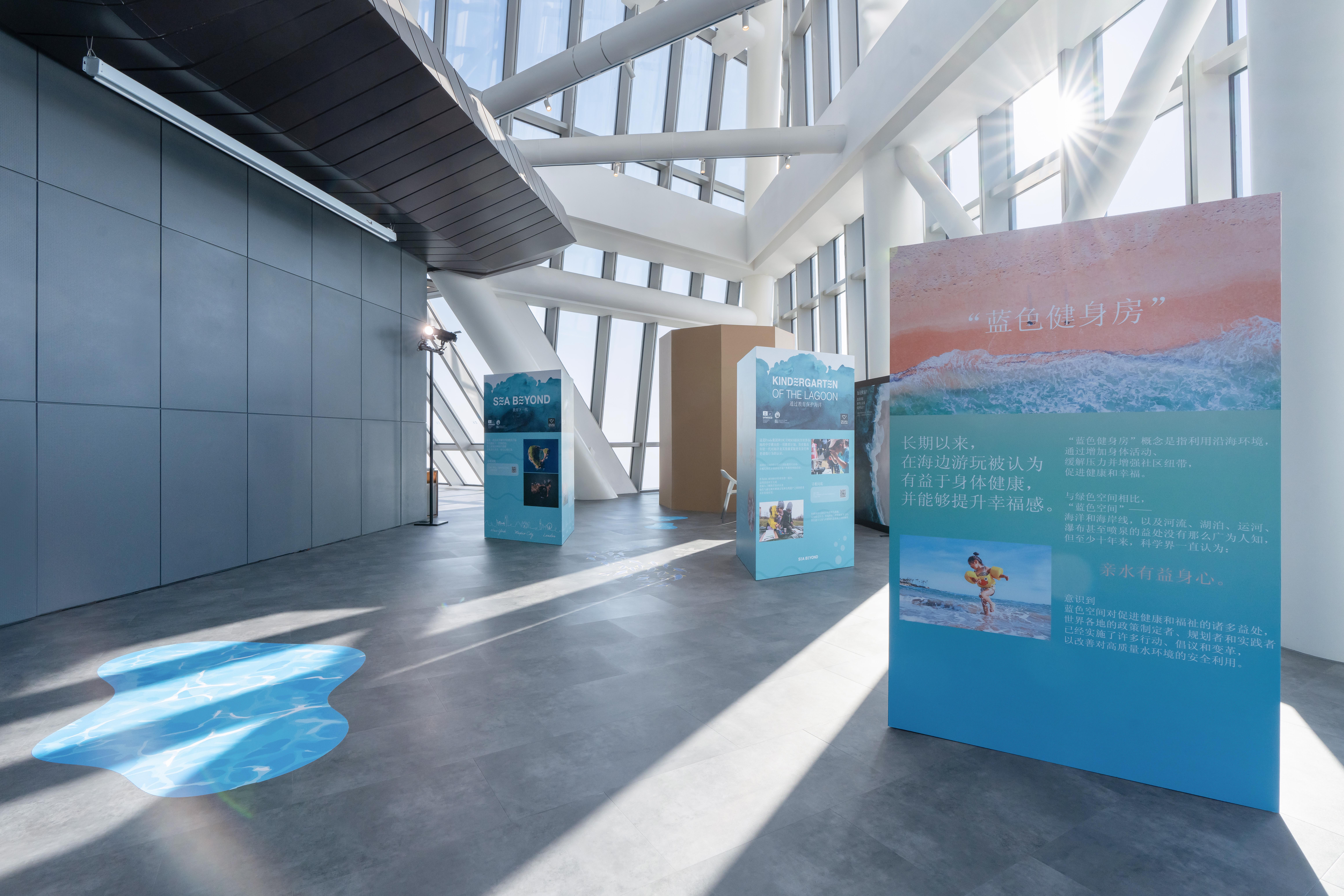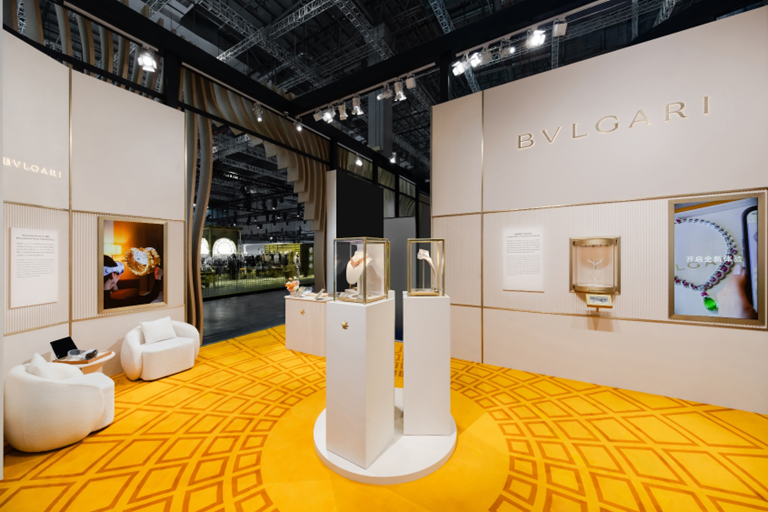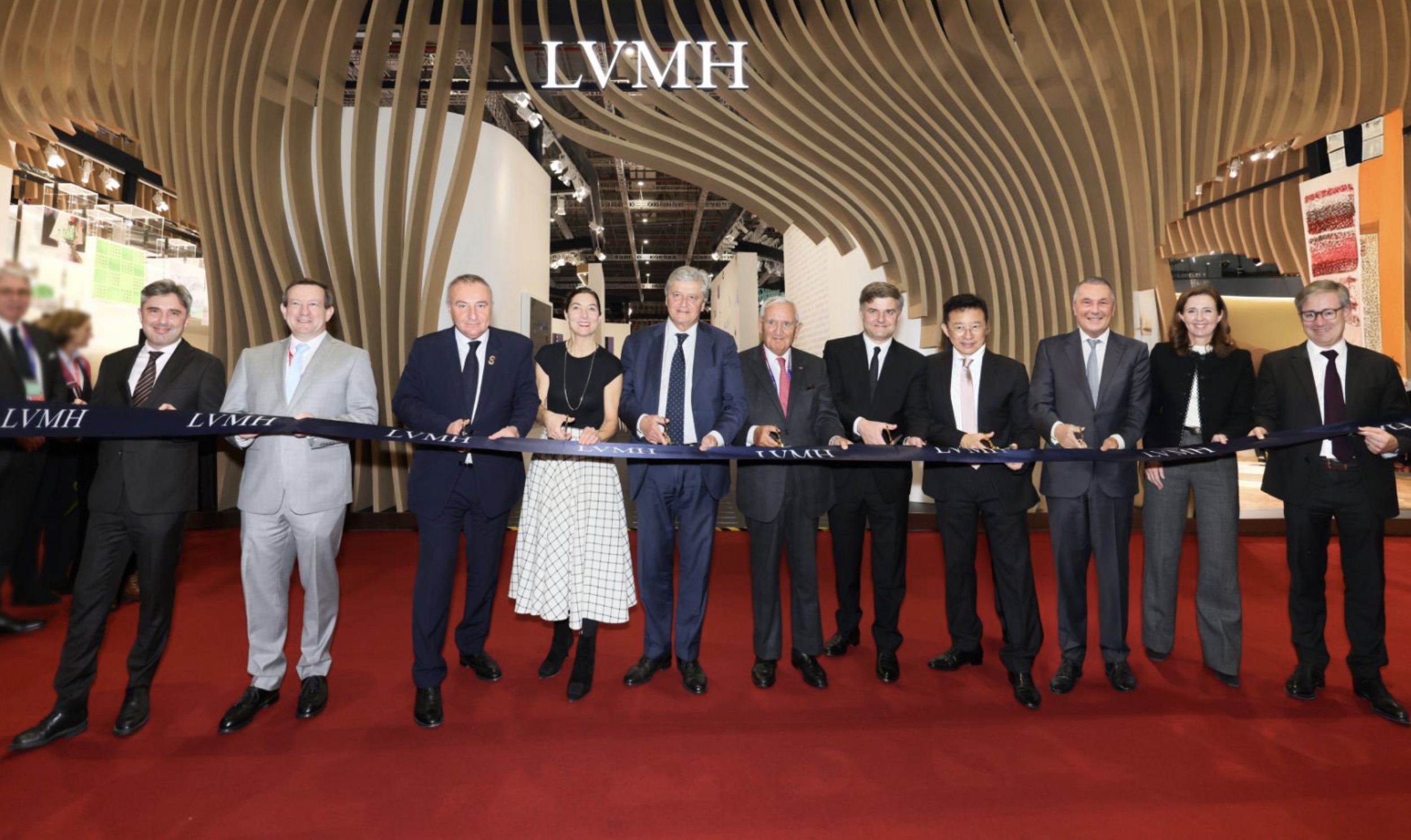Luxeplace.com was invited to participate in a special event by Prada in Qingdao, Shandong.
We arrived at Qingdao’s tallest skyscraper, the Haitian Center Complex. Standing on the 81st floor, looking south, we were treated to a breathtaking view of the beautiful seascape of Fushan Bay in Qingdao, where the endless horizon of the sea meets the sky. A touring exhibition called “Ocean & Climate Village” seamlessly merged with the seascape before our eyes, creating a naturally harmonious ocean-themed environmental exhibition hall.

This touring exhibition is an educational project called SEA BEYOND, organized in partnership between the Italian luxury goods group Prada and the Intergovernmental Oceanographic Commission of UNESCO (IOC/UNESCO). Qingdao serves as the first stop in China for this initiative.
Lorenzo Bertelli, the Head of Corporate Social Responsibility at Prada Group, is one of the driving forces behind the SEA BEYOND project. He stated, “Through SEA BEYOND, we continue to pursue our educational goals, which are the only way forward. The cost of prevention is always lower than the cost of solving problems.”
Behind this exhibition undoubtedly lies a deeper vision of Prada Group’s commitment to sustainability. In a world where sustainability is a hot topic globally, including in the fashion industry, the ocean may provide a new perspective.
Amidst the vast seascape and accessible knowledge sharing, we also explore:
- How can sustainability be made enjoyable and educational?
- Why was Qingdao chosen as the location for this ocean-focused educational exhibition?
- Starting with the ocean, how does Prada diversify its commitment to sustainability?
How can sustainable development be made both educational and enjoyable?
Q1: The ocean absorbs approximately (?) of human-emitted carbon dioxide (30%).
Q2: The ocean releases around (?) of the world’s oxygen (50-80%).
Q3: Approximately (?) thousand tons of plastic waste enter the ocean each year (1100).
Q4: Visible garbage on the ocean surface represents only (?) of marine plastic waste (1%).
Did you answer all the questions correctly?
These questions are part of the “Ocean and Climate Village” exhibition, which focuses on ocean-related knowledge in Shanghai. “Our main goal is to use ocean knowledge to address the issues threatening ocean health,” said Francesca Santoro, a senior project officer at IOC.
As an event supported by the SEA BEYOND project, this exhibition is specifically aimed at the younger generation, especially primary and secondary school students. It vividly explains how the ocean affects our climate, nature, and environment, reveals the challenges the ocean is facing, and answers why we should care about and protect the ocean.
In addition to the exhibition itself, the Prada Group has also set up children’s workshops for this exhibition. Children have shown great enthusiasm, carefully examining the informative graphics and text on the display boards, participating in interactive games, and learning about marine life and ocean conservation through creativity and interaction.
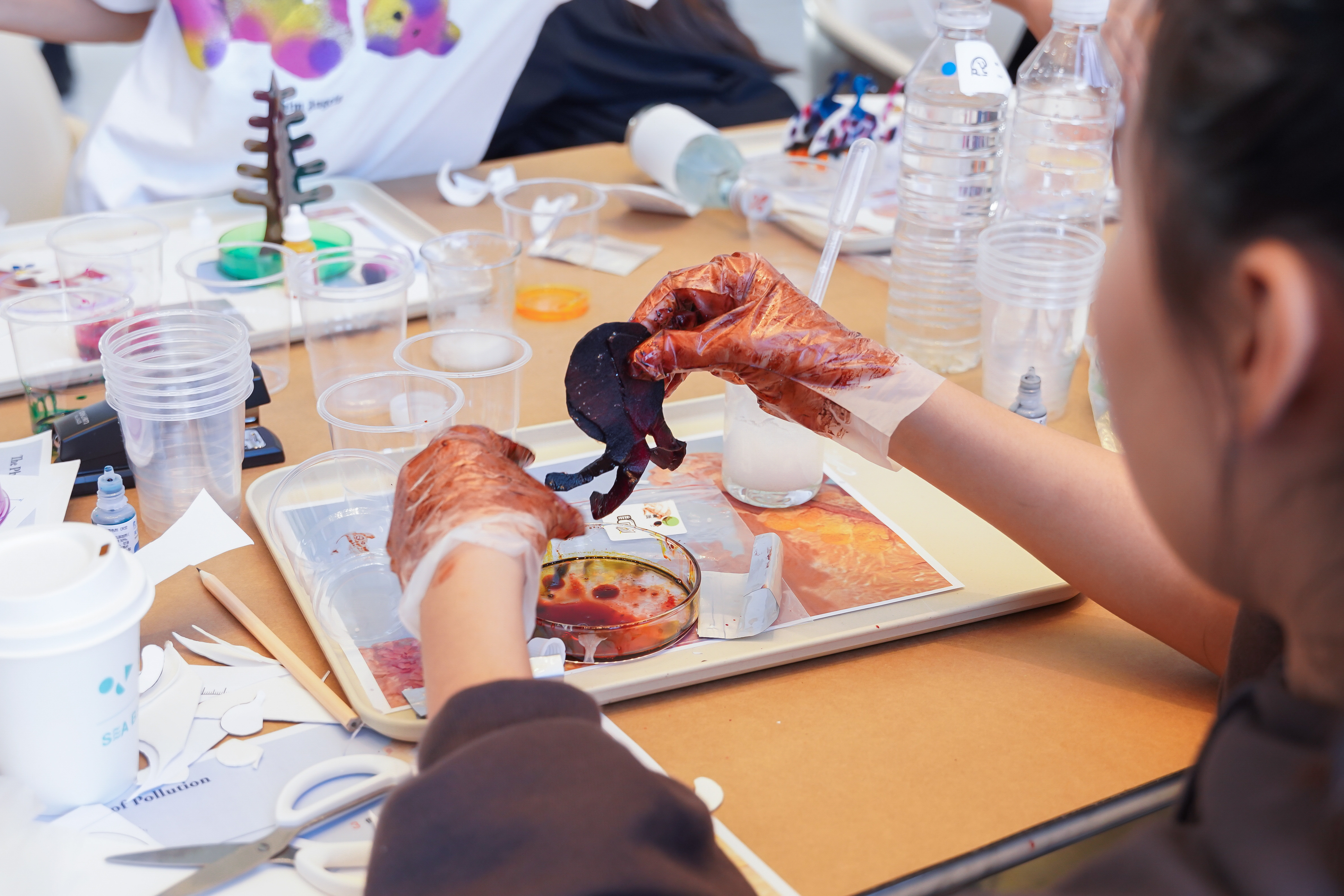
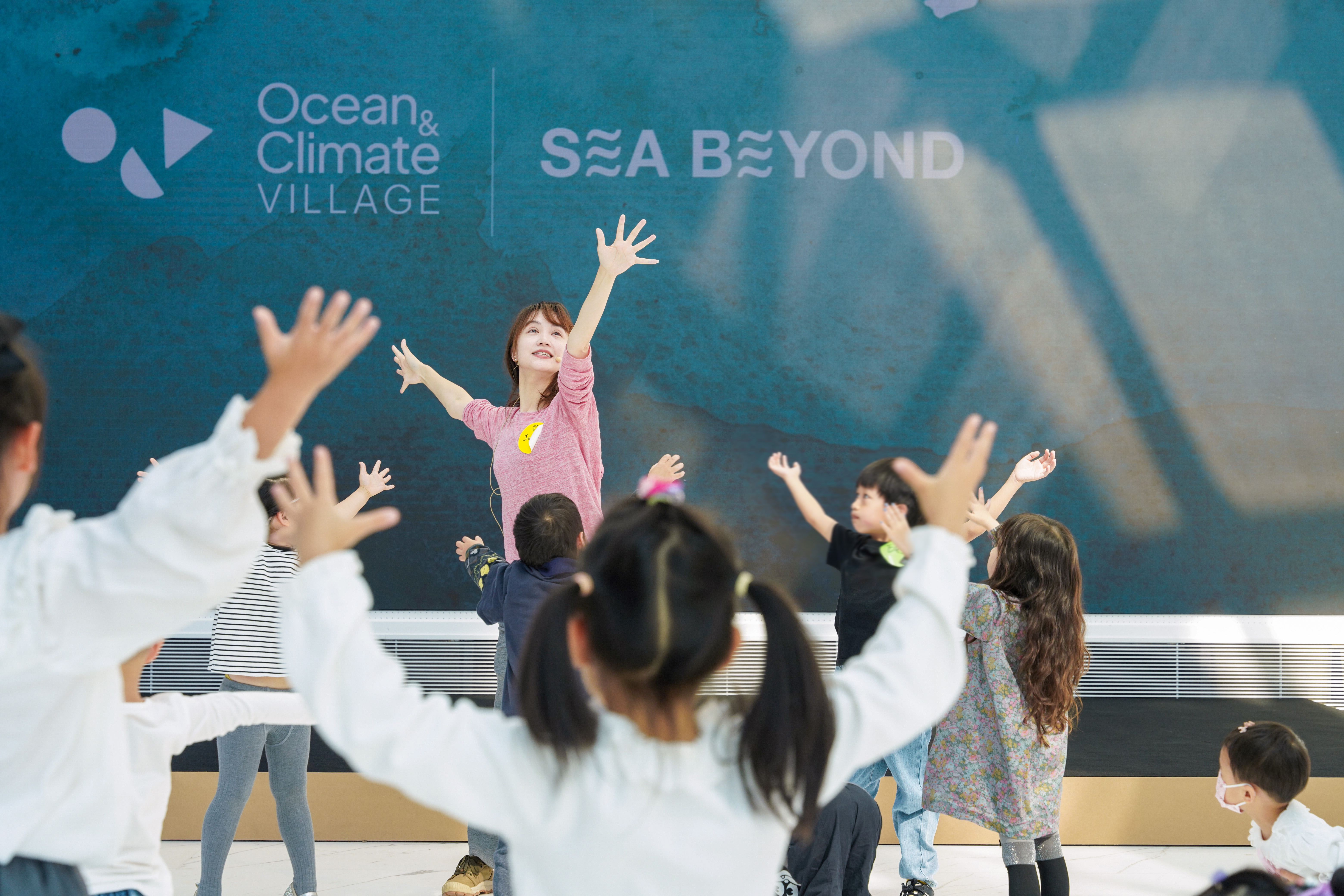
Art workshops and performance workshops specially designed for children aged 6-12.
At a time when the industry’s primary focus remains on cultivating consumer environmental awareness, the Prada Group has shifted its focus to a more long-term goal: “educating the next generation.”
Lorenzo Bertelli once stated, “At this crucial moment for our planet, we must remember that sustainability and resource conservation are closely linked to education. Solutions to the climate crisis cannot happen overnight, and only through education and everyday small actions can we effectively accelerate the changes society needs.”

Prada Group’s Chief Corporate Social Responsibility Officer, Lorenzo Bertelli.
Therefore, “education” has become a key objective of the SEA BEYOND project, aiming to inspire interest and understanding among the younger generation about ocean-related topics and raise awareness of ocean conservation through diverse content and formats.
In 2020, the first SEA BEYOND project was launched, with students from ten countries, including China, Italy, the UK, the US, Germany, Mexico, and Portugal, participating in four courses over a four-month period. They explored topics related to the ocean and its importance, ocean pollution, and sustainable initiatives in the fashion industry to protect the ocean. In June 2021, the second phase of the project was successfully held.
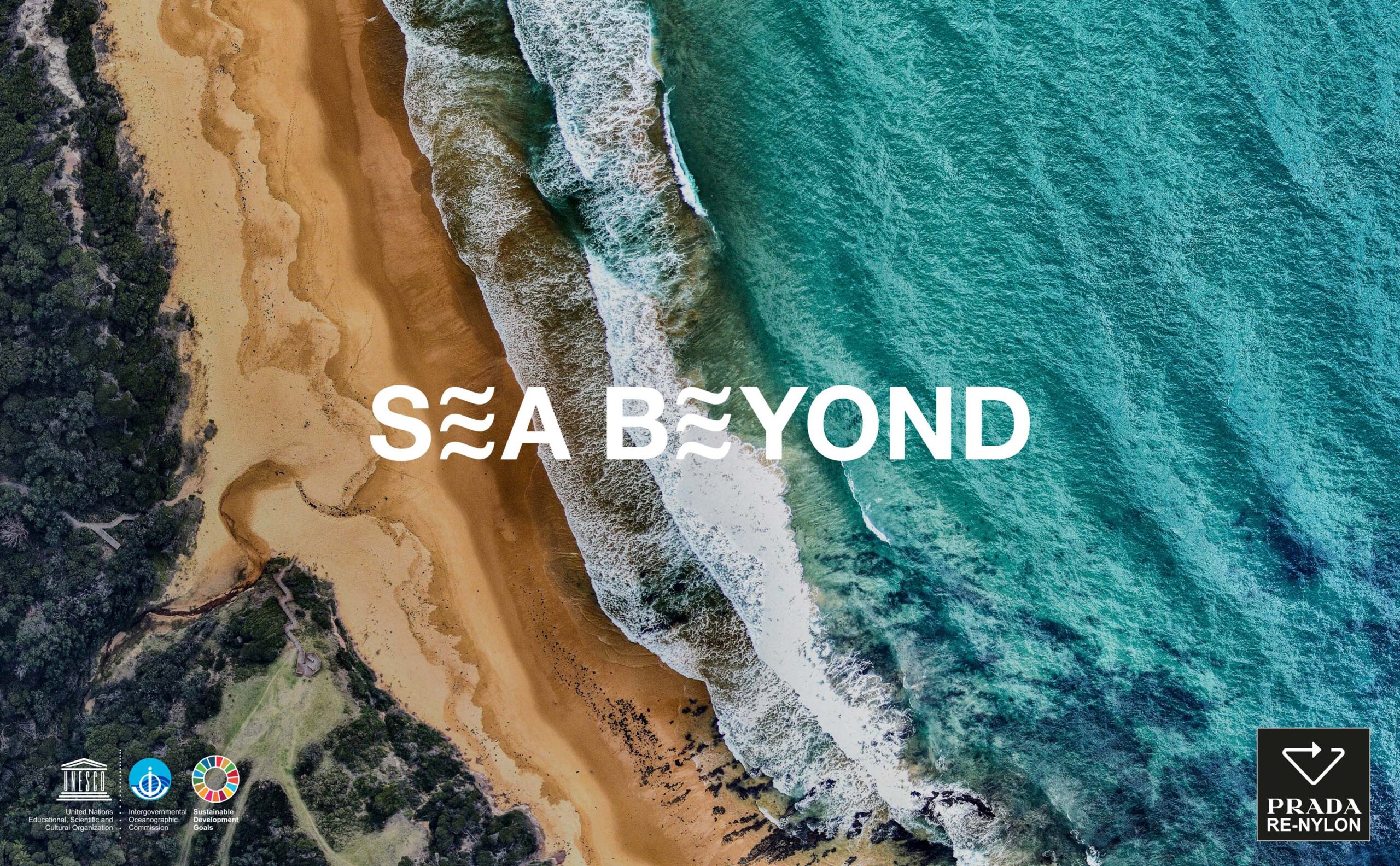
Aerial view of beach and ocean. Victoria, Australia
After each event, the Prada Group collaborates with the IOC to organize a competition where students are encouraged to interpret the challenges facing the ocean through their own written, visual, or interactive content. Students from the international department of a Shanghai high school in China achieved second place in both phases of the competition.
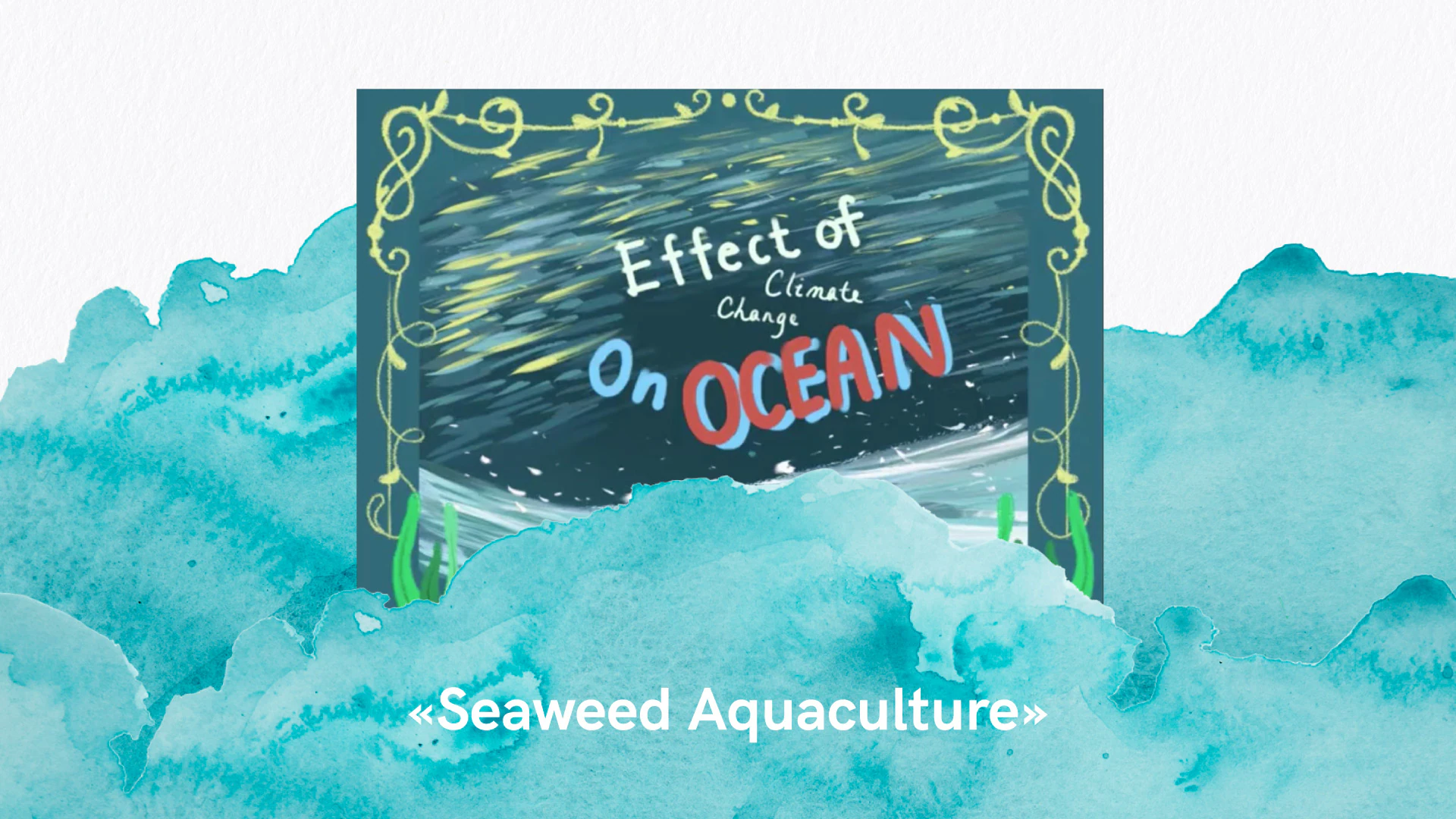
The award-winning work of students from the international department of Shanghai High School
In 2022, the SEA BEYOND project launched an innovative outdoor education experience program for preschool children called the “Kindergarten of the Lagoon.” Forty children from six schools on Torcello Island in Venice had the opportunity to learn about plants, animals, and the natural elements of the reef lagoon through hands-on outdoor experiences.
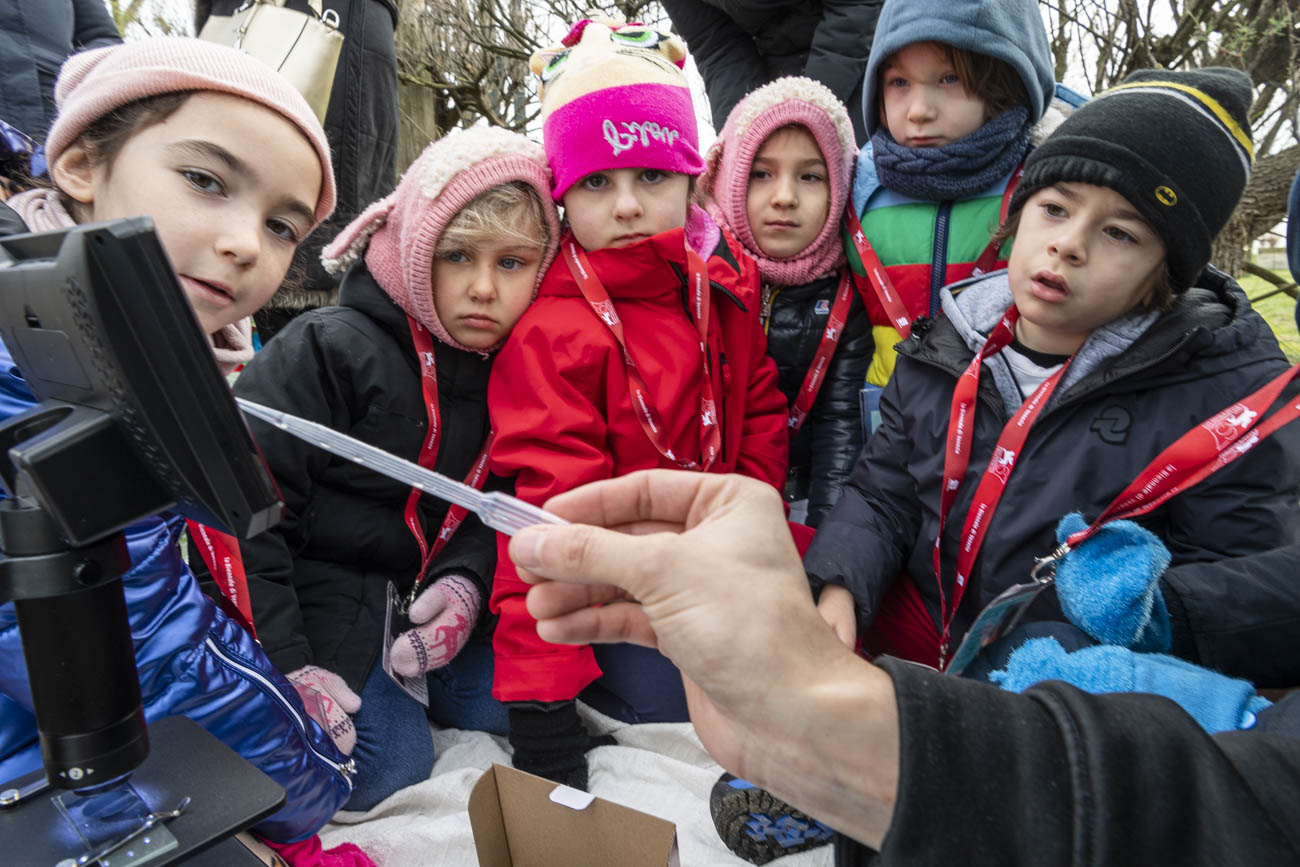
The “Kindergarten of the Lagoon” outdoor education experience program.
The mindset of the younger generation shapes the fate of the future Earth. Planting the concept of “protecting the ocean and the environment” during childhood and adolescence is evidently more effective than re-educating adults later on. Behind the SEA BEYOND project, we can see the far-sightedness of the Prada Group. Just as Bertelli said, “It’s never too late to change the future by investing in the younger generation.”
Robert Parua, an education official from the UNESCO East Asia Regional Bureau for Education, expressed a similar hope. He stated during the exhibition’s opening dialogue, “We are vigorously urging governments in various countries to ensure the comprehensive integration of Education for Sustainable Development (ESD) into the mainstream curricula of primary and secondary schools. We also hope that ocean knowledge can be incorporated into this system.”
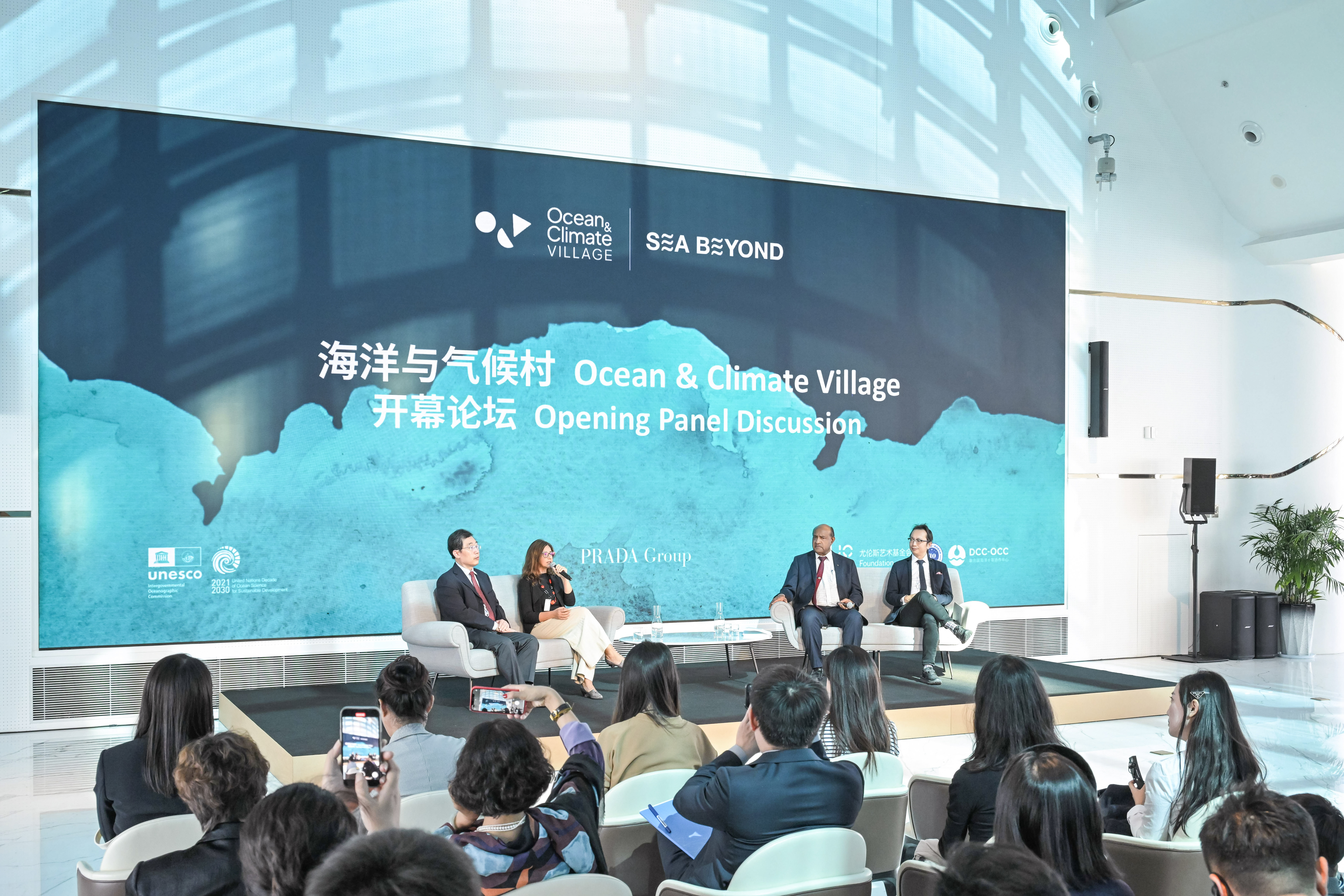

On the opening day of the exhibition, October 14th, the organizers presented two live discussions on ocean-related topics. The discussions featured participants from various fields, including senior officials from IOC, scientists, Prada ambassadors, and PADI Global Youth Ocean Ambassadors like Li Xian.
Why was this ocean science exhibition located in Qingdao?
Although the initial intention behind this exhibition was primarily aimed at children and teenagers, in reality, over the course of two days, it attracted a large number of local residents from Qingdao, with the number of participants exceeding 5,000.
For luxury brands, the choice of location for the event, while serving as a “silent” backdrop, provides the best coordinates and annotations for the brand to make a statement.
Qingdao is surrounded by the sea on three sides, with approximately 900 kilometers of coastline. Thanks to the nourishment of the ocean over thousands of years, Qingdao has developed a unique maritime urban culture. The people living in this region have formed a special “human-land relationship” with the sea, and when the exhibition is held in Qingdao, it resonates widely with the local audience.
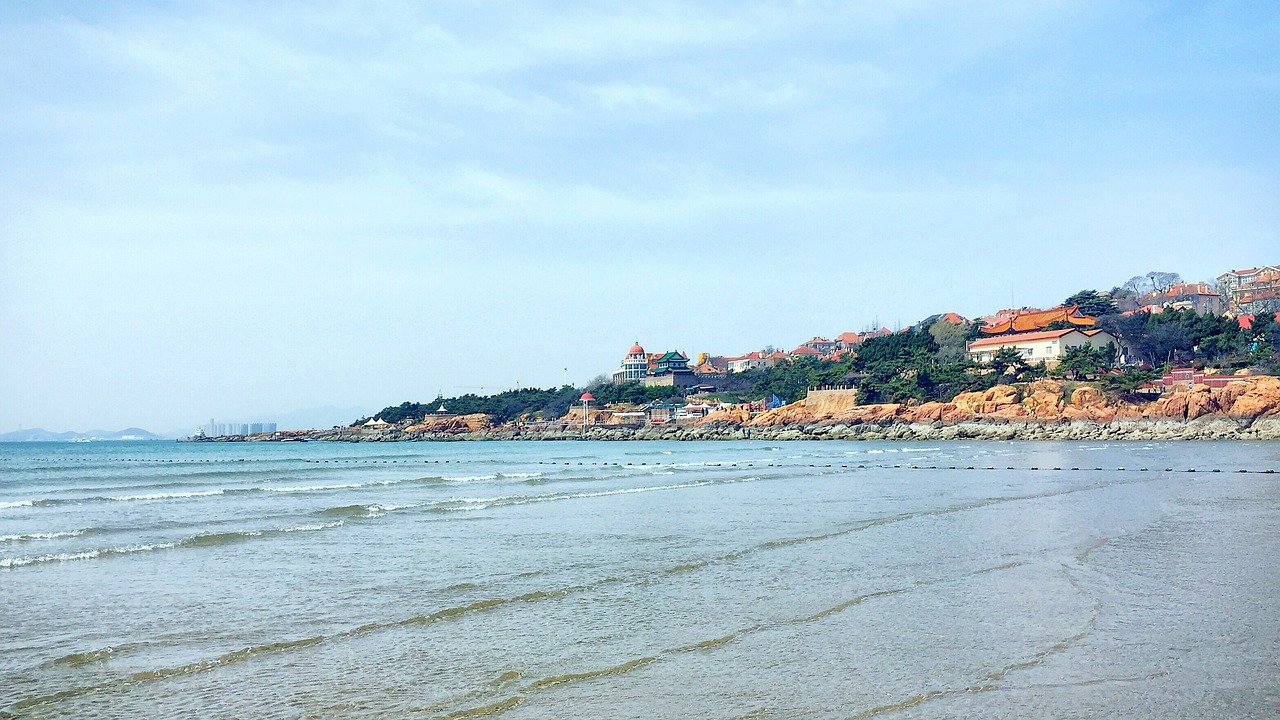
Qingdao residents can be said to have been “nurtured by the sea,” and as a result, they hold gratitude and reverence for the ocean. How to harmoniously coexist with the sea and how to sustainably use marine resources have become ongoing topics that Qingdao must explore.
This aligns perfectly with the “Ocean Literacy” concept that the Prada Group is emphasizing in this exhibition. Ocean Literacy is the idea that everyone should understand and be aware of the ocean and make wise and responsible decisions regarding the ocean and its resources.
Qingdao has always been at the forefront of marine technology in China, focusing on important national-level research institutions and talents deeply involved in marine research. They understand the ocean in a scientific manner, acquire marine resources, and protect the marine environment through technological means. As Francesca Santoro mentioned in the conversation, “Scientific discoveries by scientists should not remain confined to academia but should also serve society as a whole so that we can make progress in sustainable ocean development.”
Just before this exhibition, China’s first “Ocean Decade” Ocean and Climate Cooperation Center officially landed in Qingdao, indicating further international marine exchanges for Qingdao.
Whether it’s marine research and conservation or the local urban culture, Qingdao’s connection to the sea is multi-faceted, and local residents have deeper emotions tied to the ocean. They resonate more with Prada Group’s initial goal of marine conservation.
This exhibition in Qingdao is also an important aspect of Prada Group’s consistent approach to capturing the pulse of the city and connecting with local culture in the Chinese market in recent years.
Last August, Prada chose the Beijing Jun Wang Fu Hotel for an offline fashion show, preserving its Chinese characteristics in the show’s setup. Prada also spent six years renovating a century-old historical building in Shanghai and turned it into the “cultural hub” of the group in China, conducting a series of cultural exchange activities for the Chinese market.
It is the infusion of human emotions that makes the land where people grow up a carrier of significance and a value center for symbolic perception. When luxury brands deeply connect with local culture, they find a pathway to the hearts of consumers.
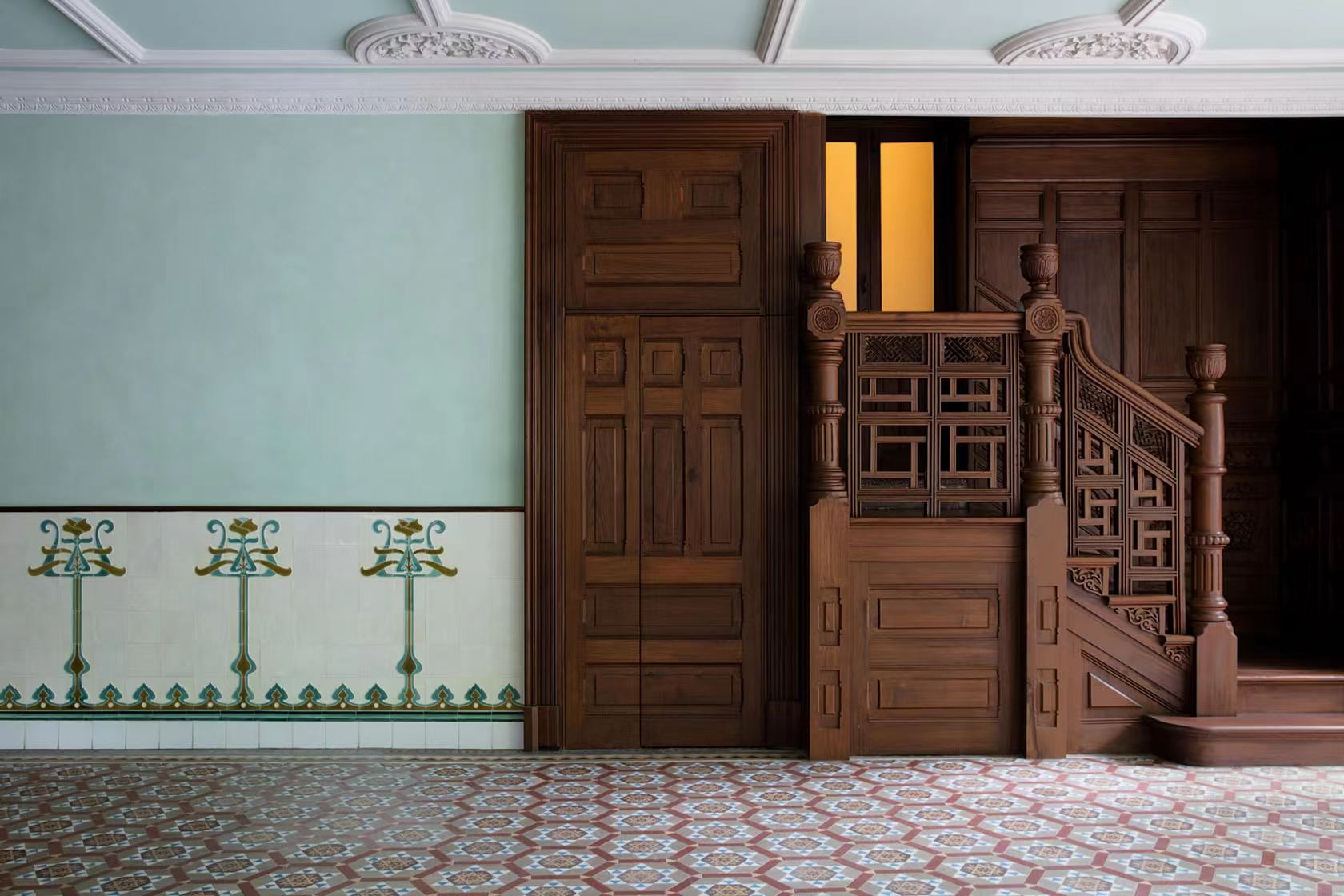
The Shanghai Prada Rong Zhai
Starting with the ocean, how does Prada diversify its sustainable practices?
Truthfully, even before the launch of the SEA BEYOND project, Prada Group was actively considering how to make a real impact on protecting the ocean.
Prada Group had early awareness of marine plastic waste. The exhibition provides a statistic: approximately 11 million tons of plastic enter the ocean each year, with a portion of it forming a floating garbage patch in the North Pacific Ocean, known as the “Great Pacific Garbage Patch.”
In 2019, Prada Group collaborated with the Italian supplier Aquafil to create the Econyl recycled nylon bag collection using ECONYL® regenerated nylon yarn developed by Aquafil. ECONYL® is made from recycled waste plastics, with some of its raw materials sourced from marine plastic waste such as discarded fishing nets.
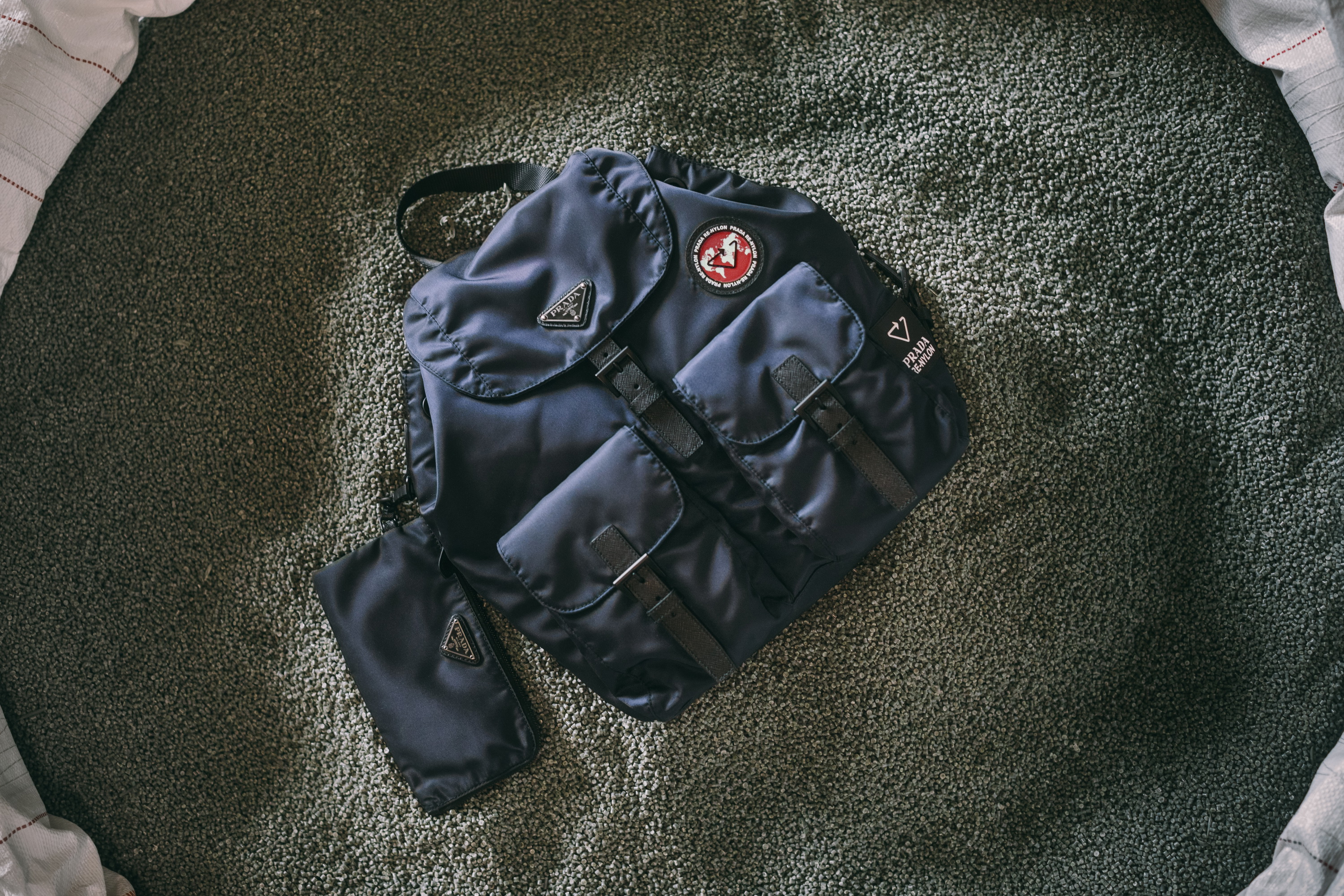
The Prada Re-Nylon recycled nylon bag collection
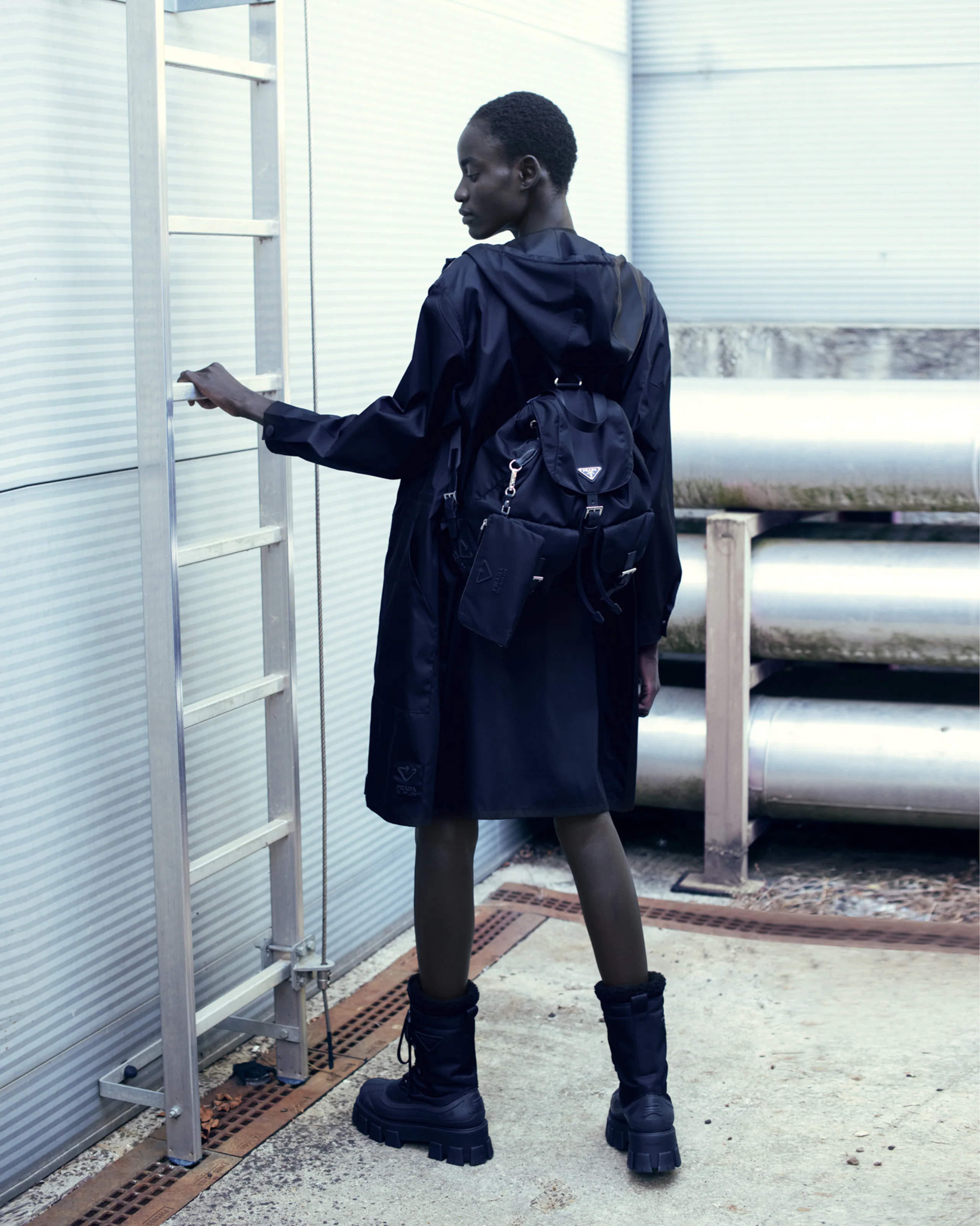
The Prada Re-Nylon recycled nylon collection has expanded to include clothing, footwear, and other product categories.
In 2021, Prada Group made a remarkable move by completely replacing its iconic nylon material with the Re-Nylon collection, which is a rarity in the industry.
This not only signifies Prada Group’s commitment to integrating sustainability into its brand DNA but also demonstrates that the use of eco-friendly materials in luxury fashion production is a viable and mature solution, which is poised to have a significant impact on the sustainable development of the fashion and luxury goods industry.
In July of this year, Prada Group announced that it would donate 1% of the revenue from the Re-Nylon collection to the SEA BEYOND project, with the amount estimated to be in the millions of dollars.
Prada Group’s long-term partnership with UNESCO, including projects like SEA BEYOND and the “Ocean and Climate Village” touring exhibition, revolves around marine education. In June 2022, Prada Group also collaborated with UNESCO’s Regional Bureau for Science and Culture in Europe to jointly present the digital design of the Miraż Oceanographic Museum. The “Let’s digitize MuMa” project tells the story of the ocean through a “virtual tour,” exploring the theme of harmonious coexistence between humans and the ocean.

The “Let’s digitize MuMa” project presents the digital design of the Miraż Oceanographic Museum.
All of these initiatives are part of Prada Group’s ongoing efforts to expand its sustainability journey. From releasing its first sustainability report in 2013 to establishing a “zero-climate strategy” at the group level in 2021, integrating sustainability into its corporate governance structure, and launching initiatives like Forestami for forest conservation and the ETERNAL GOLD jewelry collection made from recycled gold this year, Prada Group’s sustainable strategy spans various areas, including materials, corporate management and operations, philanthropy, and communication. They are actively putting their sustainability principles and brand spirit into practice in diverse ways.
Today’s consumers are no longer content to passively accept what brands offer; instead, they prefer to choose brands that align with their values. Prada Group’s actions can bring them closer and earn their recognition by aligning with these consumer values.
Conclusion
In the process of advancing sustainable development, businesses bear significant social responsibilities. As Lorenzo Bertelli put it, “Luxury brands have an obligation and an opportunity to do more. Those who have more should do more.”
Large enterprises like the Prada Group are using their influence to respond to consumer demands and thus driving the entire industry towards sustainable transformation and improvement. Their efforts in educating the next generation and exploring local cultures make Prada Group’s sustainable development strategy even more distinctive.
The “Ocean & Climate Village” exhibition, starting from Italy and radiating globally, not only spreads ocean knowledge but also subtly showcases Prada Group’s sustainable practices, highlighting the company’s sense of responsibility and leadership in addressing societal issues.
A comprehensive sustainable development strategy will undoubtedly become an integral part of luxury brands and groups’ core competitiveness.
| Image Credit: Provided by the brand, Prada Group official website, Pixabay
| Editor: Zhu Ruoyu

